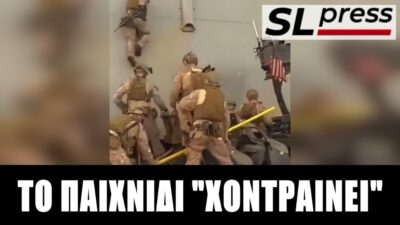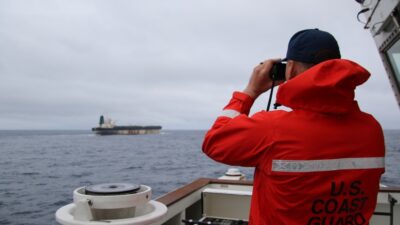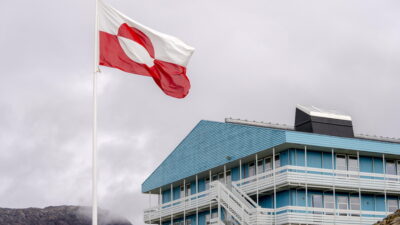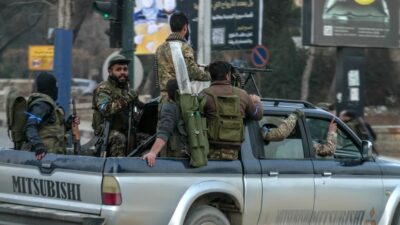Efthymios Tsiliopoulos: Can the Turks invade through the Evros? – The forces, the weapons, the field, the moves
14/01/2021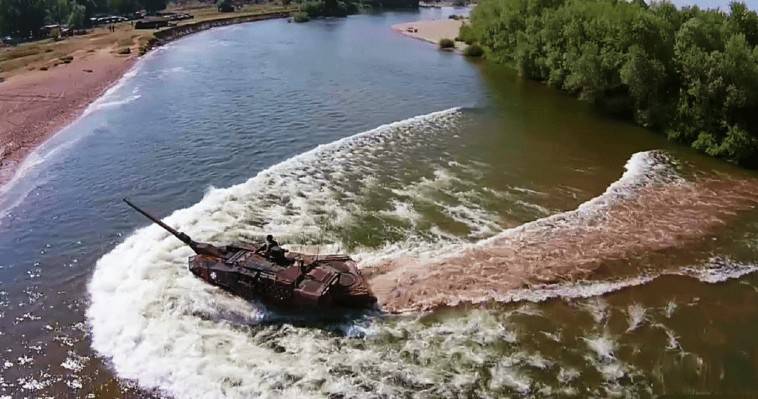
The Evros river delimits the border between Greece and Turkey (except for the point of Kastania-Edirne where the border is on land and the river passes through Edirne). The land border is about 200 km long. In the event of war, Turkish ground forces are expected to attack through the Evros border. It should be noted that after an amphibious landing, the forced crossing of a river is the most difficult military operation.
Greece fields the Fourth Army Corps in Thrace, which the Evros prefecture is part of. This is the strongest formation of the Hellenic Army. It has the most modern assets in the Greek land arsenal.
Opposite, Turkey lines up the 1st Army based in Istanbul. The Army commands the 2nd Army Corps (3 motorized, 1 armored brigade, artillery regiment and a combat engineering regiment), the 3rd Corps, which has been characterized as a NATO Rapid Deployment Corps (1 armored division, 1 mechanized brigade, 1 motorized brigade, Motorized Regiments) and the 5th Corps (1 Infantry Division, 1 Armored Brigade, 3 Motorized Brigades, 1 Artillery Regiment, 1 Combat Engineer Regiment, a Tank Brigade) and 1 Army Air Brigade. These forces number about 120,000 soldiers and over 1000 tanks (Leopard 2A4, M-60 TM / A3 TTS). It should be noted that some units of the 1st Army had been transferred to Syria for the Turkish operations there, where they suffered significant material losses.
Important for this article are the tools available to the battle engineer, including the Kunduz / AZMİM armored propellers (Turkish version of the American M9 ACE) and the Leguan armored bridging systems (with a 24-meter bridge), as well as conventional bridge construction materials. and vessels capable of crossing a river.
The terrain
The prefecture of Evros, flat for the most part, has a smooth relief. The western part of the prefecture is mountainous. The north is almost flat (plain of Orestiada-Didymoteicho). To the east, the valley of Evros is formed, which widens as the river moves south, to form a lagoon delta at its estuary. The farthest northern part is scattered with hilly ridges which provide an unobstructed field of visibility, weather permitting, at distances of many km.
The Karagac salient, the only point where the border does not have the natural border of Evros, is about 20 km from the ridges. therefore it offers a small area suitable to armored formations to the south, as to the north the plain is interrupted by the river Ardas which meets the Evros north of Edirne.
To the south, the hills next to Orestiada are just over 10 km from the Karagac salient. The salient lends itself to the advance of forces without the need for a forced crossing of the Evros. This strip of Turkish territory enters the Greek territory, west of the river, opposite Edirne, and has a total area of 2.5 square kilometers. In this pocket is the city of the same name. At the same time, it is a point that has been targeted for decades by the Greek artillery and due to surveillance, the enemy concentrations will receive an immediate response.
At times the river overflows making the shores inaccessible on both sides. Floods, especially in February and more rarely until early spring, prohibit operations. The floods are mainly due to the overflow of a Bulgarian dam on the Ardas river. In fact, if there is an Athens-Sofia agreement, the dam can release waters that will make it difficult to cross in any conditions. Eastern Thrace is an extensive plain as far as Istanbul, scattered with dense rectangular clusters of poplars geometrically aligned to offer concealment. Low hills are not missing.
Possible routes of Turkish attacks in Evros
The problem for a Turkish attack is the small size and number of the areas they can attempt to cross over and the fact that they eventually have to head south to occupy Alexandroupolis, mainly for symbolic and psychological reasons. If not, they would be limited to trying to occupy the area of northern Evros up to the border with Bulgaria.
The geography does not favor the deployment of a large number of attacking forces. As a classic tactic, an attack is carried out under the guise of exercises, in order to disguise the movement of units. The heavier units of the 1st Turkish Army will move to the places of concentration opposite the possible routes that the will follow. The combat engineer units will gather at the points where the river will be crossed. The width of the river, even when the water level is low, does not allow connection with armored bridging equipment (Leguan). pontoon bridges and ferries must be used.
At the start of the operation the enemy will strike at various points, most of which will be diversions. Unfortunately for the Turks the passages are specific. It is expected that with a pincer movemeent from the south and north they will try to eliminate the Greek small area protruding south of Kipi (Petalo). It is an easy operation and the Greek forces are not expected to robustly defend it. This does not mean that there will be no Turkish losses.
The Karagac salient
Most likely, the Karagac salient will be one of the starting points of the attack. It is the most dangerous for the attackers, but the only one that offers quick access to the plain of northern Evros for exploitation to the south (to the north the river Ardas needs engineers for crossing). In this particular passage, the enemy will expect serious losses and therefore will have to gather strong forces to replenish them.
There, Turkish forces will be in front of the Greek anti-tank moat, which stretches a long way parallel to the river Evros and which cannot be bridged by Leguan systems. It is very likely that some Turkish units will be compressed in the narrow strip between the moat and the river. Other possible attack routes are towards Didymoteicho (for exploitation of the Erythropotamos valley), Orestiada, Tychero, Kipi, etc. Due to the inaccessible terrain on the East-West axis, the main concern of the attackers will be to occupy the national road E85, which connects Alexandroupolis with the north of the prefecture and at which the Egnatia Highway ends.
The beginning of operations in Evros
Given a sufficient warning time, the Greek forces will have dispersed in positions according to the plans. The units of the Fourth Corps are constantly updating the operational plans and designing main and alternative dispersal positions. It is logical for the Turkish attack to take place before daylight with special forces crossing the river in places that are considered difficult to monitor, long before the main attack takes place.
Turkish Leopard IIA4 of the 1st Army
The purpose of the Turkish special forces is to identify the Greek units and their movements and possibly to bring designatots for targeting air weapons. Their penetration, however, has become more difficult after the shielding of Evros due to migratory flows. The fence and sensor grids can become traps for the Turkish special forces. The concern of the Turkish commandos will be the sabotage in parts of the fence to advance the spearheads of the Turkish attacks.
The Turks are expected to use artillery barrages to neutralize the Greek covering units. The Turkish artillery will be at a distance capable of preventing the return of fire from the Greek artillery. The Turks still maintain a sufficient number of 175 mm M-107 self-propelled guns and 155 mm of their own Firtina. They also have the T-122 Sakarya Multiple Missile Launchers. All these have a range of 40 km. Weapons with a range of more than 100 km will be used only if concentrations of Greek forces or high value targets have been identified (command stations, refueling stations, etc.).
However, it cannot be ruled out that some civilian targets may be hit by long-range missiles to complicate the Greek reaction, or for psychological reasons. Such targets are bridges, the railway network that facilitates the movement of reserves and supplies, power plants, telecommunication antennas, and even hospitals and administrative buildings.
The Greek reaction
With the start of the attack, the Greek reaction is expected to be immediate and given the knowledge of the area, very deadly. The columns of the attackers will be under the watchful eye of the Greek armed forces, while the Greek units will be invisible. In order for the Turks to obtain an image of the Greek order of battle, they will send drones for reconnaissance and blows to targets of opportunity. The dense air defense environment will destroy many of them. The rest will be targeted by the Army Air Force with Apache and Kiowa Helicopters, but also by the Air Force.
It is almost certain that the Greek air force will gain supremacy over the field of operations or at least will block the Turkish fighters. Having relative superiority, the Greek fighters will dedicate part of their action to the destruction of the land forces. Inevitably, south of Orestiada, the attackers will be crowded between inaccessible terrain and a river. Thus, they will be targets for Greek long-range missiles (MLRS and air-to-ground). If the Greek forces deal catastrophic blows or soften the Turkish peaks, the Greek tanks will counterattack while the infantry will undertake the clearing of the Turkish enclaves. The Turks will either have to salvage their forces west of Evros, or drop additional forces to dampen the counterattack of the defenders.
Moving the front east of Evros
Retreat will be a very difficult operation, as ferries and constructed bridge will be the first targets of Greek fire. For the same reason, it is equally difficult to deploy reserves in the field of operations. But even if they cross to the West Bank, they will face routes scored by damaged vehicles and scattered losses, a negative image for the morale of the newly arriving forces.
If the Greek counterattacks are effective, they will create conditions for the transfer of operations on Turkish territory. They will cause a wave of Turkish refugees to the east, which will block the highways from east to west, preventing the sending of reserves. In this case, the rapid fall of the Karagac salient is expected along with the occupation of Edirne with all that entails. Greek advance into Eastern Thrace is not recommended, as Turkey will still have sufficient forces to counterattack, trying to regain lost ground. Wreckage of the Turkish attack, however, will have catalytic political and military implications.





